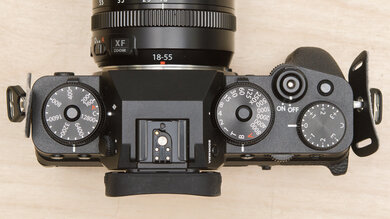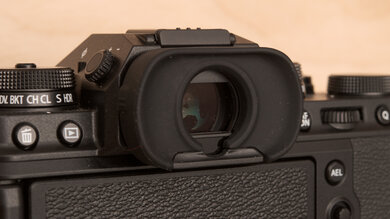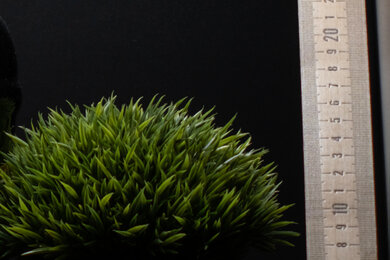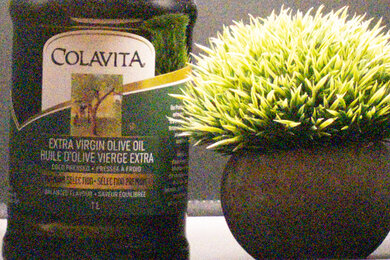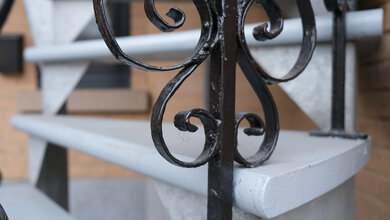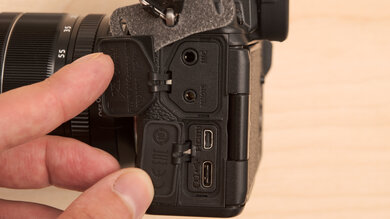The Fujifilm X-T4 is a premium APS-C mirrorless camera. It offers very good image quality, impressive recording quality, and good image and video stabilization performance. Its autofocus performance for both photography and video is amazing, allowing you to clearly capture fast-moving objects and people without too much difficulty, although its photo autofocus can be a bit inconsistent. It's also exceptionally well-built and offers a wide range of photo and video configuration options. Unfortunately, it's quite heavy, making it a little tricky to carry from place to place.
Our Verdict
The Fujifilm X-T4 is good for travel photography. It delivers very good image quality overall, and you can get good results in darker environments. The autofocus and in-body image stabilization features perform well overall, allowing you to quickly take clear pictures without the use of a tripod. Its 500-shot battery life should last you most of the day, while its metal body feels sturdy enough to take some drops and bumps, though it feels a little heavy.
-
Very good image quality.
-
Impressive build quality.
-
Good overall autofocus performance.
-
Shoulder strap attachment point can be obtrusive.
-
Somewhat heavy.
The Fujifilm X-T4 is a good choice for landscape photography. It takes sharp images out of the box, with a good amount of dynamic range to bring out more detail. It also does pretty well in low light, though its noise handling is just decent. Its screen is also clear and legible even in direct sunlight.
-
Very good image quality.
-
Impressive build quality.
-
Good overall autofocus performance.
-
Fully articulated, high-resolution screen with good brightness.
-
Shoulder strap attachment point can be obtrusive.
-
Somewhat heavy.
The Fujifilm X-T4 is good for sports and wildlife photography. It can shoot at very high continuous speeds and has an effective autofocus system overall, allowing you to clearly capture brief moments. That said, its AF tracking feature isn't the most reliable.
-
Very good image quality.
-
Impressive build quality.
-
Good overall autofocus performance.
-
High maximum shooting speed.
-
Shoulder strap attachment point can be obtrusive.
-
Somewhat heavy.
-
AF tracking can be unreliable.
The Fujifilm X-T4 has good RAW photo performance. It has good dynamic range to bring out more detail in high-contrast scenes. Its high-resolution sensor also does a great job of resolving fine detail, even when you punch in. That said, its noise performance in low light is only decent, though you can still get good results depending on your lens.
-
Good dynamic range.
-
Photos look quite sharp and detailed.
-
Noise handling is just decent.
The Fujifilm X-T4 is great for vlogging. Its fully articulated screen lets you easily monitor what you're recording while its in-body and optical stabilization features keep videos stable, even when you're on the move. Its autofocus system should also do a fantastic job of tracking and maintaining focus on your face as you record, whether you're shooting in 4k or FHD.
-
Good overall autofocus performance.
-
Fully articulated, high-resolution screen with good brightness.
-
Impressive video quality.
-
Superb video stabilization performance.
-
Somewhat heavy.
The Fujifilm X-T4 is great for studio video. Video quality is excellent, whether you're recording in 4k or FHD. Its continuous autofocus system easily keeps moving faces and objects in focus, although its object tracking can be a bit inconsistent. Unfortunately, it lacks a dedicated headphone jack, necessitating the use of a clunky USB-C adapter.
-
Good overall autofocus performance.
-
Impressive video quality.
-
No built-in headphone jack.
The Fujifilm X-T4 isn't designed for action video but offers decent performance. It isn't small enough to be mounted on a head rig, and it isn't waterproof. That said, it's sturdy enough to take minor drops and bumps and offers great video recording quality, regardless of whether you're filming in 4k or FHD. It can also record FHD video in 120 fps or 240 fps for the express purpose of generating slow-motion video, as playback is limited to 30 fps.
-
Impressive video quality.
-
Superb video stabilization performance.
-
Supports 120 fps and 240 fps recording with slow motion playback.
-
Shoulder strap attachment point can be obtrusive.
-
Somewhat heavy.
-
Not waterproof.
- 7.9 Travel Photography
- 7.9 Landscape Photography
- 7.8 Sport & Wildlife Photography
- 7.7 Raw Photo Performance
- 7.9 Vlogging
- 8.4 Studio Video
- 6.9 Action Video
- Updated Jan 29, 2024: Added text to the 'Raw Photo Performance' verdict box and updated existing verdict boxes for clarity and accuracy.
- Updated Jan 29, 2024: Converted to Test Bench 0.12.1.
- Updated Aug 14, 2023: We've updated the sensor type to 'BSI CMOS' to reflect the sensor's back-illuminated design. We previously only noted that it was a 'CMOS' sensor.
- Updated Aug 09, 2023: Added a link to the Fujifilm X-T5 to the 'Screen' section of the review.
- Updated Jun 15, 2023: Added a link to the Fujifilm X-H2S in the 'Photo AF-C Tracking' box.
- Updated Jun 06, 2023: We've updated the 'App Name' in the 'Menu System' section of the review to reflect this camera's compatibility with Fujifilm's new XApp.
- Updated May 04, 2023: Added link to the Fujifilm X-H2 in the 'Ergonomics & Comfort' box.
- Updated Apr 05, 2023: Added a link to the Canon EOS R7 in the '4k Video Frame Rate' box.
- Updated Dec 14, 2022: Converted to Test Bench 0.12.
- Updated Nov 21, 2022: Converted to Test Bench 0.11.
- Updated Sep 23, 2022: Converted to Test Bench 0.10.
- Updated Aug 16, 2022: After running into issues with RawTherapee during retesting for Test Bench 0.9, we decided to process the 'Photo RAW Dynamic Range' test scene in Lightroom instead. The test scene photo has been reuploaded.
- Updated Jul 29, 2022: Converted to Test Bench 0.9.
- Updated Apr 22, 2022: After reviewing the low light sample videos, we've increased the 'Low Light Capability in FHD' score to more accurately reflect this camera's performance.
- Updated Apr 22, 2022: There was some slight motion blur in our original JPEG test scene photo at base ISO, so we've retaken the photo and re-uploaded it to the 'Photo JPEG Noise' and the 'Test Scene Pictures Download' sections.
- Updated Apr 22, 2022: Converted to Test Bench 0.8.
- Updated Jun 28, 2021: Retested object tracking success rate for photo. Updated 'Autofocus' box accordingly.
- Updated Jun 18, 2021: Corrected 'FHD Frame Rate' for accuracy and to better reflect users.
- Updated May 31, 2021: Update the 'Water Resistance' field to indicate 'Weather-Sealed', as it was incorrectly set to 'No.'
- Updated Apr 12, 2021: Corrected input error in 'Tested Lens' field.
- Updated Apr 02, 2021: Corrected input error in 'Recording Light' field in the 'Video Feature' section.
- Updated Feb 08, 2021: Review published.
Differences Between Sizes And Variants
The Fujifilm X-T4 comes in two color variants: 'Black' and 'Silver'. We tested the 'Black' variant with the FUJINON XF 18-55mm F/2.8-4 R lens; you can see its label here. We expect the 'Silver' variant to perform similarly overall.
You can also purchase it in either color scheme with the FUJINON XF 16-80mm f/4 R OIS WR lens or without a lens at all, but we haven't tested the performance of these variants.
If someone comes across a differently-equipped variant of the Fujifilm X-T4, let us know in the forums, and we'll update our review.
Compared To Other Cameras
The Fujifilm X-T5 marks a return to the photography-oriented roots of the X-T series after the more hybrid design of the Fujifilm X-T4. Both are very capable cameras for photography and video, but the fully articulated screen of the X-T4 is better suited to video work, while the three-way tilting screen of the X-T5 is better for photography. The X-5 is just a touch lighter and more portable, and its new high-resolution sensor captures more detailed photos with more cropping leeway.
The Fujifilm X-T4 is better overall than the Fujifilm X-T30 II, though they both use the same sensor, so image quality is roughly on par between them. If you prefer a more robust camera with weather-sealing, a bigger high-resolution viewfinder, and a fully articulated screen, get the X-T4. If you're looking for something smaller and easier to carry around, the X-T30 II is still a great option. However, the X-T4 also has better internal video recording capability, so it's a better option for video work.
The Fujifilm X-H2 and the Fujifilm X-T4 are both excellent APS-C cameras, but they're aimed at slightly different users. The X-H2 is a bit more powerful, with a higher-resolution sensor, upgraded autofocus system, and video recording in up to 8k resolution. However, it's a lot bulkier than the Fujifilm X-T4, which is the better choice for users who want a more portable hybrid camera.
The Fujifilm X-H2S is more capable than the Fujifilm X-T4, with an improved autofocus system, better internal video capability, and a stacked sensor design that allows for faster burst shooting with minimal rolling shutter effect. That said, it can also be overkill for many people, particularly if you don't need its advanced filmmaking features. The X-T4 may be better if you want a more portable hybrid camera with dedicated exposure control dials.
The Sony α7 IV and the Fujifilm X-T4 are both great hybrid photo/video cameras, but they use different-sized sensors. Because the Fujifilm uses an APS-C sensor, it's more portable than the Sony, but both cameras are well-built, weather-sealed, and have fully articulated touchscreens. The Fuji also has a faster max burst rate and better overall stabilization. On the other hand, the Sony's full-frame sensor gives it better low-light and high-ISO performance and better dynamic range. When it comes to video, both cameras can shoot 4k / 60 fps, although the Sony incurs a larger crop at this frame rate, and they can both record 10-bit 4:2:2 video internally. While the higher-resolution full-frame sensor on the Sony offers some advantages over the Fujifilm, the Fuji is still competitive, especially if you prefer a more compact form factor.
The PENTAX K-3 Mark III and the Fujifilm X-T4 are both premium APS-C cameras, but they use different technologies with different advantages and disadvantages. The PENTAX is a DSLR, so it's heavier and bulkier, but it has an optical viewfinder and longer battery life. The Fujifilm, on the other hand, is a mirrorless camera, allowing for a much more portable body. It also performs significantly better when it comes to video features and autofocus tracking.
The Fujifilm X-T4 and the Olympus OM-D E-M1 Mark III are both great all-around cameras, but the Fujifilm has a slight edge thanks to its larger sensor, slightly more compact design, and more advanced video features. Though the Fujifilm isn't quite as comfortable to shoot with, its APS-C sensor has better noise handling and dynamic range than the smaller Micro Four Thirds sensor of the Olympus. It also has a better battery life and higher-resolution EVF. That said, the Olympus has a faster max burst rate and extra features like a high-resolution photo mode and digital ND filters that still make it an appealing option for photography. However, when it comes to video, the Fujifilm offers better internal recording, higher bit rates, and 4k / 60 fps recording.
The Fujifilm X-T4 and the OM SYSTEM OM-1 perform similarly overall, though they use different-sized sensors. Both cameras have highly effective IBIS systems, decent if somewhat inconsistent autofocus systems, and similar video specs. That said, the Fujifilm is a bit more portable, with dedicated exposure dials that give it a slightly more hands-on shooting experience. The OM SYSTEM, on the other hand, offers faster electronic burst shooting and more computational photography modes, along with generally smaller lenses.
Test Results
- Grip is deep enough to be well-suited for a wide variety of hand sizes
- Dedicated physical controls for changing ISO, shutter speed, and aperture, allowing you to make adjustments without the need to navigate through the camera's menu system
- Attachment point for its shoulder strap is in an inconvenient location, as it can interfere with finger placement on the handgrip as well as access to the shutter button, even when the shoulder strap isn't attached
- Shutter button offers little in the way of feedback when it's pressed
- Rubber eyecup around its viewfinder isn't especially comfortable to hold your eye against
- If you want a similar camera with better ergonomics, consider the Fujifilm X-H2.
If you prefer tilting screens, check out the Fujifilm X-T5.
For a Fujifilm camera with improved AF tracking, check out the Fujifilm X-H2S.
If you'd like a camera that can record 4k at 60 fps without a crop, check out the Canon EOS R7.
If you're looking for a camera that can do 4:2:2 subsampling internally, consider the Panasonic LUMIX GH5s.




